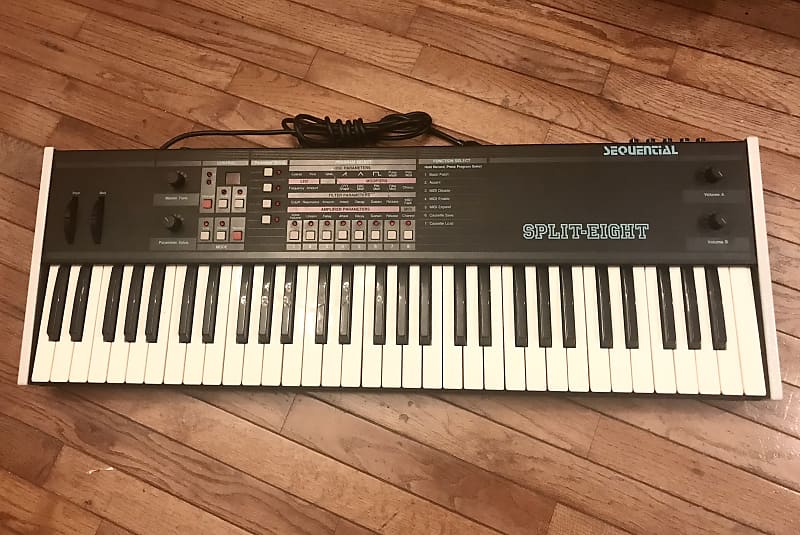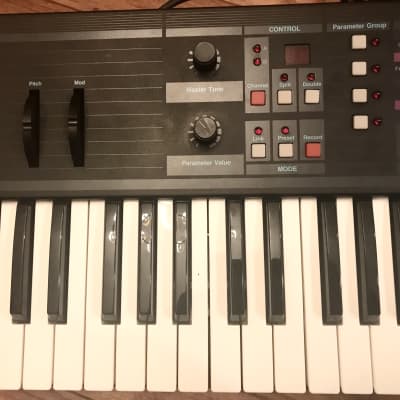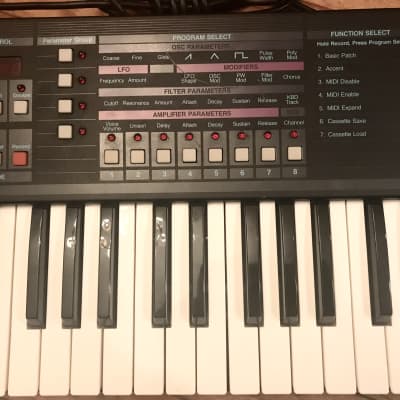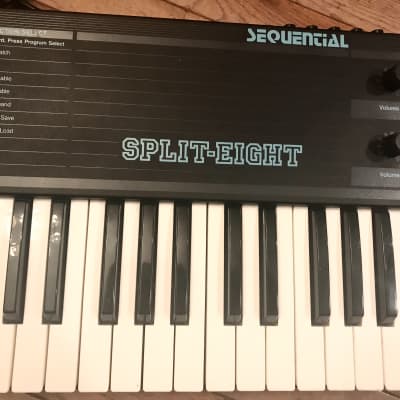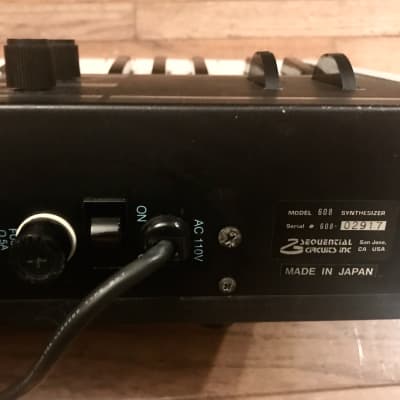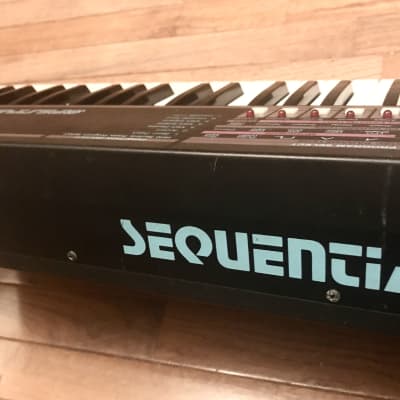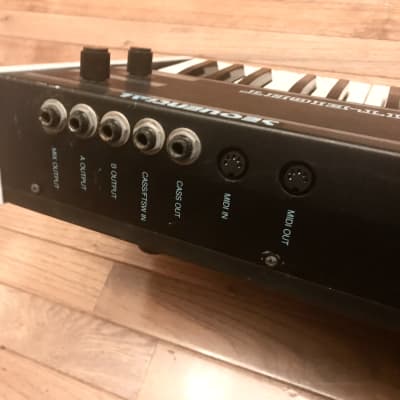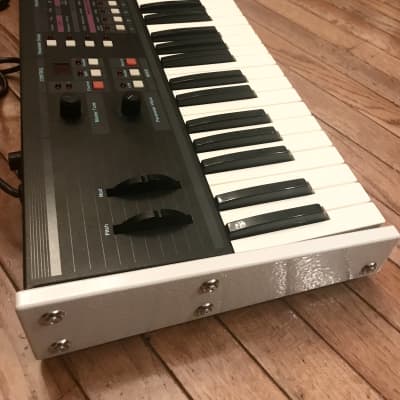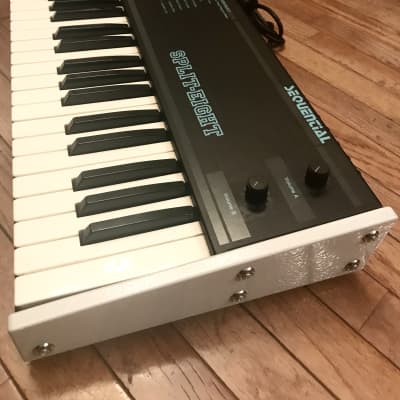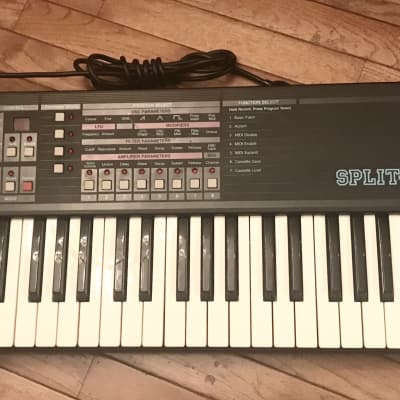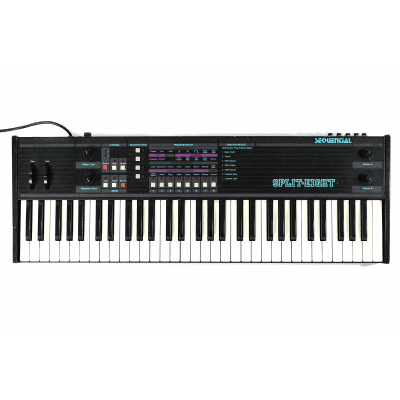Sequential Circuits Split Eight (Sold as the Pro Eight in Japan)
Relatively uncommon but a fantastic sounding analogue synth capable of some extremely rich sounds when compared to modern digital offerings.
This unit is completely restored and fully operational.
This unit has seen the following service:
- Completely refurbished keybed
- All button contacts (Keybed and front panel buttons) have been refurbished
- ALL electrolytic caps replaced including those on the audio board.
- New memory battery installed
- New voltage regulators installed
- New led matrix chips installed
- Full factory sysex installation with original factory sounds restored.
- Fully tested and working great!
The Split-8 makes for a very nice programmable polyphonic analog synthesizer with complete MIDI implementation. With 8 voices and 8 oscillators (Curtis 3394 SENTE chips) the Split-8 is a heavy contender against the Roland Juno-106.
The keyboard features splits and layers, all of which can be saved with patch data. Choose between 8 voice polyphony with 1 oscillator per voice, 4 voice polyphony with dual oscillators per voice, 2 voice polyphony with a mega 4 oscillators per voice, or the unison mode which is just a fat 8-voice solo mode for trance bass and lead heaven! Similar to the Juno-106, the Split-8 uses a Chorus effect to liven up the sounds.
Split-8 features:
- One voltage-controlled oscillator (VCO) for each of the eight voices. Switches are used to set any combination of triangular, sawtooth and square wave. Pulse width modulation (PWM) is available.
- For each voice, the coarse tuning is available within four octaves as well as the fine tuning.
- Programmable "poly mod" allows the audio output of one voice to feed another's VCF. In this case, the polyphony is reduced to four voices.
- The voltage-controlled low-pass filter (LP VCF) has a four-stage structure with a slope of 24 dB per octave. Cutoff, resonance and modulation depth adjustments are available. A keyboard tracking mode is also provided (higher notes have a higher cutoff frequency).
- The low-frequency oscillator (LFO) produces a triangular or rectangular waveform in the range from 0.25 to 20 Hz. It can be used to modulate the cutoff frequency of VCF, the pitch of the VCO and the pulse-width modulation.
- ADSR envelope generators for VCF and VCA.
- Keyboard "split" and "layer" functions are available.
- Programmable chorus effect.
- Full MIDI support, including downloading presets via the sysex protocol.
Specifications:
- Polyphony - 8 voices
- Oscillators - 8: 1 per voice (sawtooth, triangle and square)
- LFO - 1: programmable rate (0.25 - 20 Hz), depth, triangle, square waveforms; route to VCO, VCF, or pwm
- Filter - 24dB/octave 4-pole lowpass resonant filter; cutoff, kybd, ADSR env
- VCA - 2 ADSR Envelope gens
- Keyboard - 61 keys (no velocity or aftertouch)
- Memory - 64 patches, 64 performances
- Control - MIDI IN/OUT (2-parts), SysEx dumping
(The youtube link is an EXAMPLE of the sounds the Split Eight can achieve. It is not the exact unit for sale here in this listing.)
